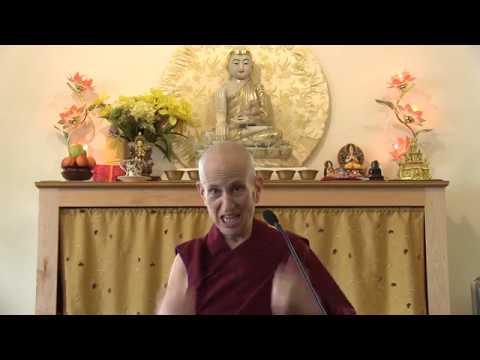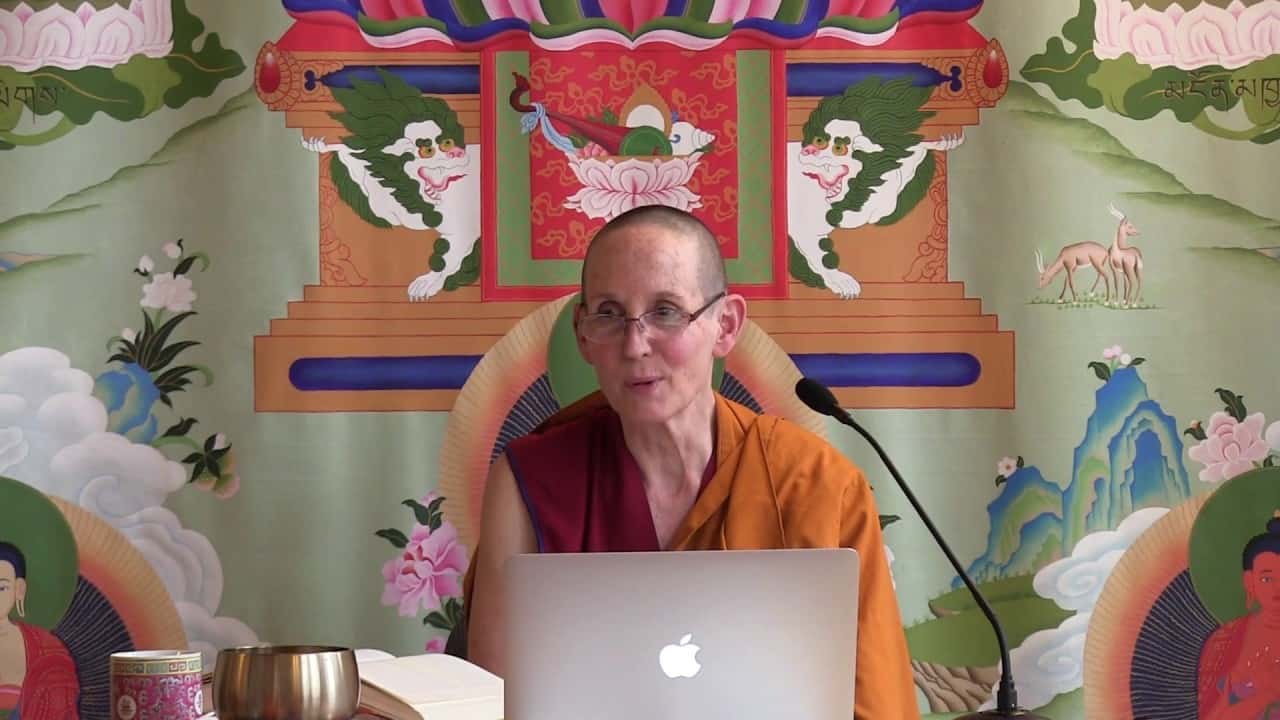Being an example of love
Part of a series of short talks on the pithy verses from the end of Lama Yeshe's book When the Chocolate Runs Out.
- Mixing up love and attachment
- How attachment is biased and unstable
- Seeing the faults in attachment
- How attachment can become a stumbling block for developing bodhicitta
To continue with what Lama said, we’re still on the second one:
Live in harmony with one another
and be an example of peace, love, compassion, and wisdom.
We talked about the first part of it, living in harmony with one another and being an example of peace. Now an example of love.
Love is not so easy, because we mix it up with attachment a lot. The difference between them is love wants someone to be happy and have the causes of happiness simply because that person exists. Attachment wants that for the person because it feeds something in ourselves. Either because the person likes us and that makes us feel good, or the person needs us, and that makes us feel worthwhile. Or the person praises us and that helps our self-esteem. In other words, with attachment there’s some ego benefit that happens. That builds in partiality. That makes us close to some people and distant from others. We choose the ones that we’re close to because they fulfill that within ourselves. And then of course the people who don’t fulfill it we want to get rid of. And when the person we love stops fulfilling those needs in ourselves, then we don’t like them either.
The whole thing about attachment is that it’s not very stable and there are a lot of strings attached. This brings difficulties in relationships.
When we say attachment here, we’re not talking about the attachment that a child needs to develop towards their mother or caregiver when they’re a child, because that’s the kind of attachment that’s psychologically beneficial for babies. And that’s why we’re crying out so much about separating parents from children at the border, because it interrupts that process that’s so necessary for a child’s feeling of stability. That kind of attachment is not the kind of attachment we’re talking about. Here we’re talking about…. Well, you know.
The thing about attachment is when somebody threatens our connection with that person, we really respond quite vehemently. If somebody criticizes the person we’re attached to, we defend them. Automatically, we defend them. There’s so much bias in there because our kindness goes to this one. When others need the same thing, we don’t have the energy or the interest.
To really develop love—the kind of love that doesn’t have strings attached—it really takes a lot of work on our own parts. We have to be able to identify the attachment and to own up to it. And we don’t like to own up to our attachment. Because attachment makes us feel good. Anger, that’s hard to own up to also, but at least with anger it makes us feel lousy, so it’s easier to admit. But with attachment, oh, I’m so close to this person, I feel needed and wanted, worthwhile and loved, supported … everything else. All these very human needs that get put onto one person, and then the partiality starts and everything goes from there.
Because attachment makes us feel good, it’s harder to recognize, and it’s harder to see the faults in it. We say, “But I care for this person, I want to help this person. Buddhism talks about helping other people. I want to help them. So what’s wrong with attachment? I’m helping them. I feel close to them. What’s the problem?” Like I said, the problem is that it’s not stable, and as soon as the relationship changes in any way, our feeling of closeness changes. Our willingness to help changes. And it becomes a real stumbling block for generating bodhicitta, because with bodhicitta we want to have an equal sense of love and compassion for everybody. But when we’re attached to a few people, our sense of love and compassion is not equal. So it becomes difficult to really open our heart to all beings because we have so many preferences. So, it’s hard. But it’s important and it’s necessary.
Monastic precepts support this process in a sense that family life supports attachment and partiality, and in monastic life we don’t have special friendships. We don’t want to develop the mind that every time we have a problem we have to run to somebody for advice and seek a personal friend who always supports us and advises us and counsels us and accepts us, and so on, while excluding other people in the community, or in the sangha. We really try very hard to open our hearts to everybody.That’s an essential process, and an essential practice, in a community. We work on it. Slowly. Don’t we? But this is the basis that we start with. Because if we can’t open our hearts to each other in a community in some sort of equal way, then how are we going to open our hearts towards all the infinite sentient beings there are, especially the ones that we have very different political opinions with, or any other different economic opinions, different whatever opinions we have.
Lama here, in telling us to be an example of love is really saying, “Look, this is something important to work on in your practice.” You’re not going to get there by next Monday. But try and work on it consistently. At least own up to the attachment and do your best to see the fault in attachment. That will help you open your heart to all living beings in a much more stable and satisfying way.
Audience: I was thinking when somebody is in relationships or has a family, so your attachment may be very strong, and you develop some kind of habit and your mind is so focused on just some people, so how to get out of that, because you’re so habituated to be just with those people, care about them, and not so much for the world. And I think very much it’s important to go out and be engaged. Maybe workplace, to really practice with that. Or volunteer. If you have children, even go out and volunteer in an orphanage or whatever. So to kind of broaden yourself, to make connections, to learn that you can also give to other people the same amount of love.
VTC: Very true. Very good thing to do. Thank you.
Venerable Thubten Chodron
Venerable Chodron emphasizes the practical application of Buddha’s teachings in our daily lives and is especially skilled at explaining them in ways easily understood and practiced by Westerners. She is well known for her warm, humorous, and lucid teachings. She was ordained as a Buddhist nun in 1977 by Kyabje Ling Rinpoche in Dharamsala, India, and in 1986 she received bhikshuni (full) ordination in Taiwan. Read her full bio.


